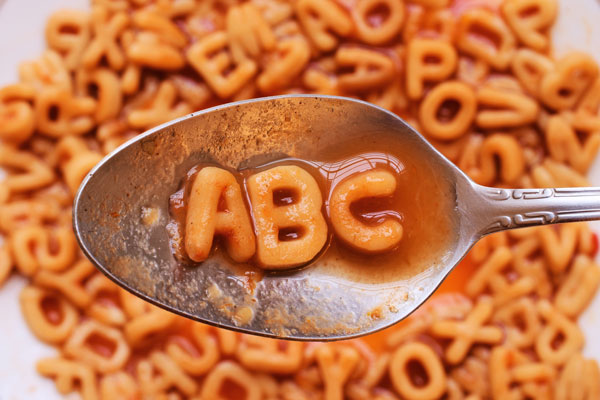Addressing Major Food Recalls in Your Business
It seems like every year we have a large-scale food recall that reminds consumers and foodservice operators about the importance of food safety. Not that we need reminded, but it certainly puts the topic in the headlines again. Last year, it was the onion recall. This year, it may very well be the Jiff peanut butter recall, of which we are in the midst of. At the time of the publishing, we are starting to learn more about a potential hepatitis A outbreak linked to strawberries. If you have not been impacted by either of these recalls in your personal or business life, I would be surprised.
Recalls such as these certainly serve as a reminder of the need for a solid food traceability program and a good understanding of how recalls occur in the U.S. Both of which we have discussed in the last year within these blogs, so please be sure to check out that information.
Of interesting note is the onion recall that occurred in the late-winter and spring of 2021 was due to an outbreak of Salmonella and the Jiff peanut butter recall has also been linked back to Salmonella, too. Salmonella is a key “player” in foodborne illnesses, accounting for almost a third of all food-related deaths in the U.S. To read a bit more about Salmonella, please check out our blog from May of 2021.
…be sure to communicate to any employees and customers what steps you have taken to remove the recalled product from your operation. Guests will certainly be wondering about any implications for your facility and who better to address those questions than your front-line employees.
What do you do about food that has been recalled and how can you handle it in your operation? The first key is to stay up-to-date on these recalls. If you have ordered the food through a major distributor, chances are the distributor will reach out and alert you about the recall if you have received product that is included in the recall. But if you purchase food from a local supermarket, you will likely not receive notification unless the store tracks your purchases via a shopper’s club card, which is becoming more and more common in the US.
Once you determine the product you have in house is part of the recall, remove it from inventory as quickly as possible, including any of the product that might have made its way into production. Move it away from other inventory, cooking equipment, etc. and be sure to communicate with your employees that it should not be used. Any utensils, storage containers, mixing bowls, or other equipment which may have come into contact with the product should be thoroughly cleaned and sanitized.
Once you have quarantined the product, refer to the recall noticed to determine how to best dispose of the product and be sure to do so in a safe manner. Then, be sure to communicate to any employees and customers what steps you have taken to remove the recalled product from your operation. Guests will certainly be wondering about any implications for your facility and who better to address those questions than your front-line employees.
If you haven’t already checked out our second SafeBites Webinar of 2022, Facts and Myths of Food Safety Messaging, be sure to check it out. Our presenter, Dr. Ellen Shumaker from North Carolina State University did a great job addressing discussing food safety messaging and the role of food safety culture in shaping employee and organizational behaviors.
As always, be sure to reach out if you have any questions about food safety, we are happy to help whenever we can. Risk Nothing
READ MORE POSTS
The Alphabet Soup of Hepatitis and Why it Should Concern Foodservice Operators.
Late in July, I was made aware that World Hepatitis Day was on July 28th. I do have to be honest – similar to most of you reading this, I was surprised there was such a thing. After doing a bit of research, I discovered July 28th was named as such to recognize the birthday of Dr. Baruch Blumberg, who first discovered the hepatitis B virus in 1967 and then two years later developed the first hepatitis B vaccine. Each year, the Centers for Disease Control and Prevention and the World Health Organization recognize the day to help raise awareness about hepatitis, which impacts over 300 million across the globe and causes more than one million deaths a year.
Food Recalls: Another Important Reason to Have a Sound Traceability Program in your Foodservice Operation
Earlier in the month, I discussed a bit about the proposed traceability rules that may be coming out soon. One result of implementing the proposed rule and improving overall food traceability in your operation is the ability of those in the food chain to quickly identify and pull product involved in a food recall.
Food Traceability in Foodservice Operations: An Essential, and Soon-to-be Required, Component of your Food Safety Plan
In June, I discussed the importance of having a solid food defense plan, and I provided you some resources for developing or strengthening your food defense plan. As I was writing those blogs, my mind kept turning toward food traceability. While they are distinctly different concepts, food traceability goes hand-in-hand with a food defense program. I would argue for your food defense plan to be effective, you must have an effective internal food traceability program, where you can trace the product back to the supplier (backward traceability), but also be able to trace the product from the supplier to the guest who was served the product (forward traceability).
Food Defense Plan Resources – at just the right price…
Earlier in the month, I discussed the importance of having a solid food defense plan in place for your foodservice operation. Even if the first version of your plan is not perfect, it is a start. Having plans down on paper will force you to think through the process and ensure the vulnerable points where opportunities exist for possible contamination within the operation are mitigated.










